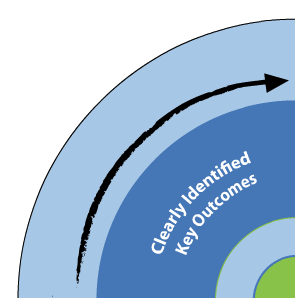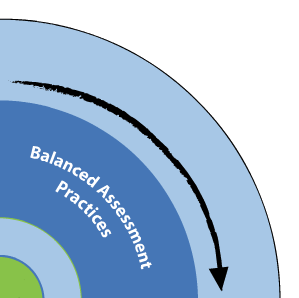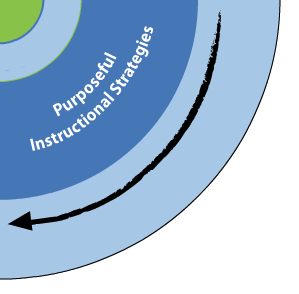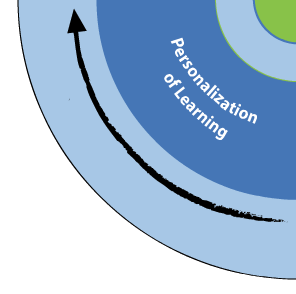Metacognitive Skills - Visualizing
Visualizing
Page Navigation
(Click to jump to section)
| Research | Clearly Identified Key Outcomes | Balanced Assessment Practices | Purposeful Instructional Strategies | Personalization of Learning |
Research
- Visualization is the ability to see/imagine pictures while we read or hear text. It is an essential skill in comprehension in terms of a student being able to create mental pictures.
- The goal of visualization is to have the process become automatic, as this aids in retention. The ability to do so, further embeds understanding of text, and should relate as much as possible to personal experience.
- Ideally, this should be an intrinsic skill, and should also be developed from K to 12.
- This process can develop into inference skills as well, whereby the images are so strong, they can appear movie-like. Once this has been developed, expository text can find more meaning through similar processes.

Clearly Identified Key Outcomes
Use your programs of study for curriculum outcomes related to visualizing.
Please refer to CESD’s Essential Outcomes work if you are using the previous Alberta Curriculum (Grade 7+).
Here is the New Alberta ELAL Curriculum, from the New Learn Alberta website, laid out like a scope and sequence.

Balanced Assessment Practices
- Students describing the pictures in their minds as they read or listen to reading.
- Drawing pictures of what they have read.
- Visualizing will start to show up in students’ writing as they develop the skill.

Purposeful Instructional Strategies
PRE
- Have students look at the cover of a book or read a title, or part of text, and talk about what comes to mind. Ask questions to determine if a student can relate to the text through smell, images, touch or taste, based on experiences a student may have had. Ensure that students have the necessary experiences in order to relate to the text. This may mean a field trip, video clips or the viewing of photographs prior to the reading. Have a vocabulary wall filled with terms and words that students will utilize and refer to throughout the unit.
- It is best to start the process with using a short piece of descriptive language that lends itself to visual images. This provides an opportunity to discuss the use of mental images as a valuable process. In the older grades, contrast this experience with perhaps a nonfiction passage where it is challenging to create mental pictures and discuss. It is likely you will need to model this technique.
DURING
- Graphic Organizers – (e.g. Mind maps, charts, venn diagrams, drawings) Throughout the reading have students begin a mind map, and have them add small drawings or symbols to the mind map as the reading continues. At frequent intervals, have students stop and share their images with others, so as to review the sequence of events, as well as reinforce comprehension in an ongoing systematic process. Also, students can begin to create a list of words they don’t understand, and then the teacher can add those to the word wall. Having visual references beside some of the word wall words is also beneficial.
- Students close their eyes or put their heads down, while listening to the story and then have an opportunity to draw/create word lists or images to match what they “saw”. Have students share their mental pictures and compare/contrast the differences in the images. They then can meet with others in the classroom to share their lists/ character traits/images, and add new information as it is gathered.
- As students are responding, continue to remind them to use all of the senses and access their emotions.
- Read a story to students without showing them the pictures and discuss what images came to mind, and then read the story again showing the pictures.
POST
- Through visual, verbal or writing students can demonstrate how the visualization creates personal links between the reader and listener, as well as reflect on how their pictures assist in their understanding of a character, plot or setting.
RESOURCES TO SUPPORT OVERALL DEVELOPMENT




Personalization of Learning
- Some students may need to hear or read passages more than once, or at a slower pace.
- It can be beneficial for students to create an image at a time, rather than all at once, due to recall challenges.
- Have students retell their drawing following each reading, to see if there are any other details they might add. This can further embed comprehension.
- For students who might be challenged in this area, develop imagery by using items in their immediate environment eg. rotten lunch, playground puddles, storms
- When this is discussed frequently, students who have difficulty visualizing, will benefit from others’ comments and ideas.